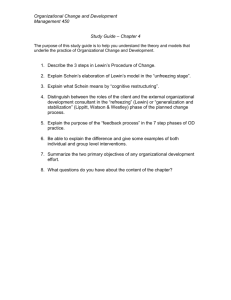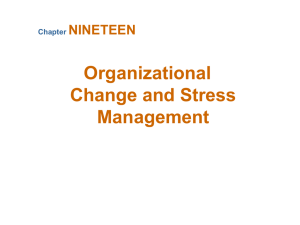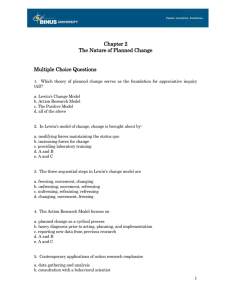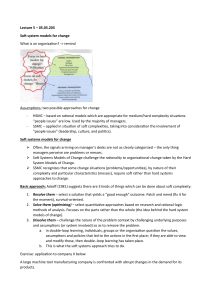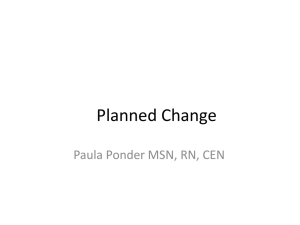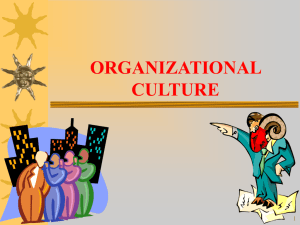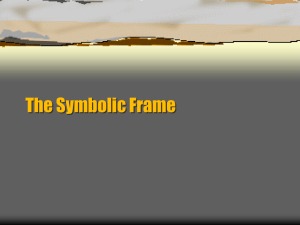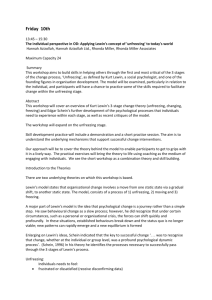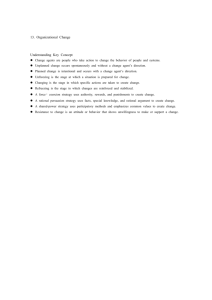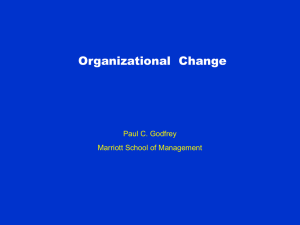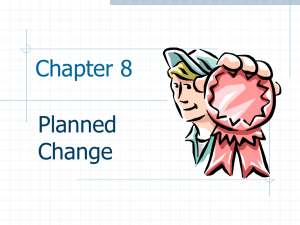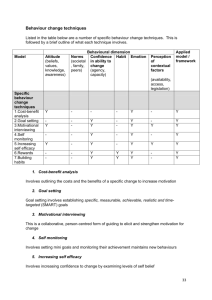Organization Change Quiz: Burke 4th Ed, Chapter 8
advertisement
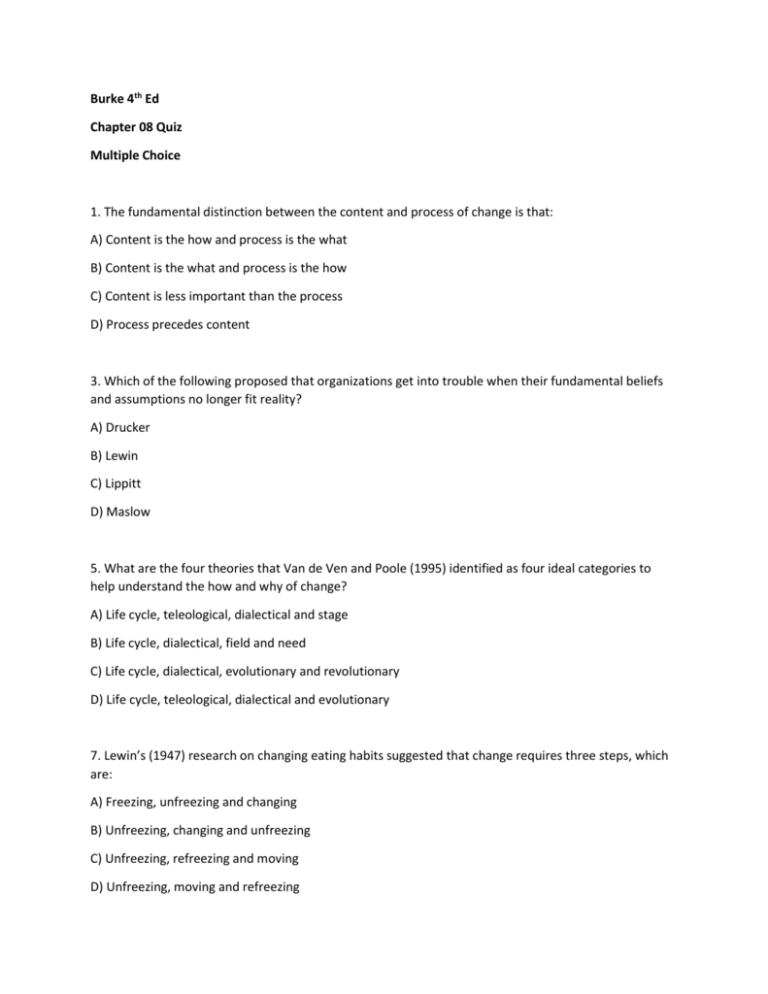
Burke 4th Ed Chapter 08 Quiz Multiple Choice 1. The fundamental distinction between the content and process of change is that: A) Content is the how and process is the what B) Content is the what and process is the how C) Content is less important than the process D) Process precedes content 3. Which of the following proposed that organizations get into trouble when their fundamental beliefs and assumptions no longer fit reality? A) Drucker B) Lewin C) Lippitt D) Maslow 5. What are the four theories that Van de Ven and Poole (1995) identified as four ideal categories to help understand the how and why of change? A) Life cycle, teleological, dialectical and stage B) Life cycle, dialectical, field and need C) Life cycle, dialectical, evolutionary and revolutionary D) Life cycle, teleological, dialectical and evolutionary 7. Lewin’s (1947) research on changing eating habits suggested that change requires three steps, which are: A) Freezing, unfreezing and changing B) Unfreezing, changing and unfreezing C) Unfreezing, refreezing and moving D) Unfreezing, moving and refreezing 9. Lippitt, Watson and Westley (1985) did which of the following to Lewin’s three steps model of change? A) Refuted it after testing it on organization change B) Expanded and elaborated each step, and redesignated the steps as overlapping stages C) Reversed them D) Expanded them to five “phases” 11. Beckhard and Harris (1987) included in their transition model: A) A step in which leadership determines whether or not to change B) A neutral zone C) Punctuated equilibrium D) All of the above 13. Episodic organization change: A) Neatly follows the model, “If Y happens, X likely caused it” B) Is predictably linear C) Due to unanticipated circumstances, is not as sequential as the linear models convey D) Is so complex that using a model hinders more than it helps 15. Theories from psychology and organizational behavior address: A) Individual, group and larger system levels of organization change B) Only the individual and group level C) Only the group level of organization change D) Only the individual level of organization change 17. Participative management and a family metaphor are examples of theories to help create organization change at the: A) Individual level B) Group level C) Both individual and group level D) Neither individual nor group level 19. Normative re-educative strategies are premised in the idea that: A) People are independent and think for themselves B) People like to follow directives C) People conform and commit to sociocultural norms D) People are political True/False 25. Examples of shifts in an organizations external environment include: economic downturns, new technology, company mergers, and new laws. A) True B) False 27. The life-cycle theory is important because it states that an organization “follows a single sequence of stages or phases, which is cumulative and conjunctive” and helps lead us to understand which phase the company is in. A) True B) False 29. If I think that human beings are rational and intelligent therefore I am using a normative reeducative strategy. A) True B) False
